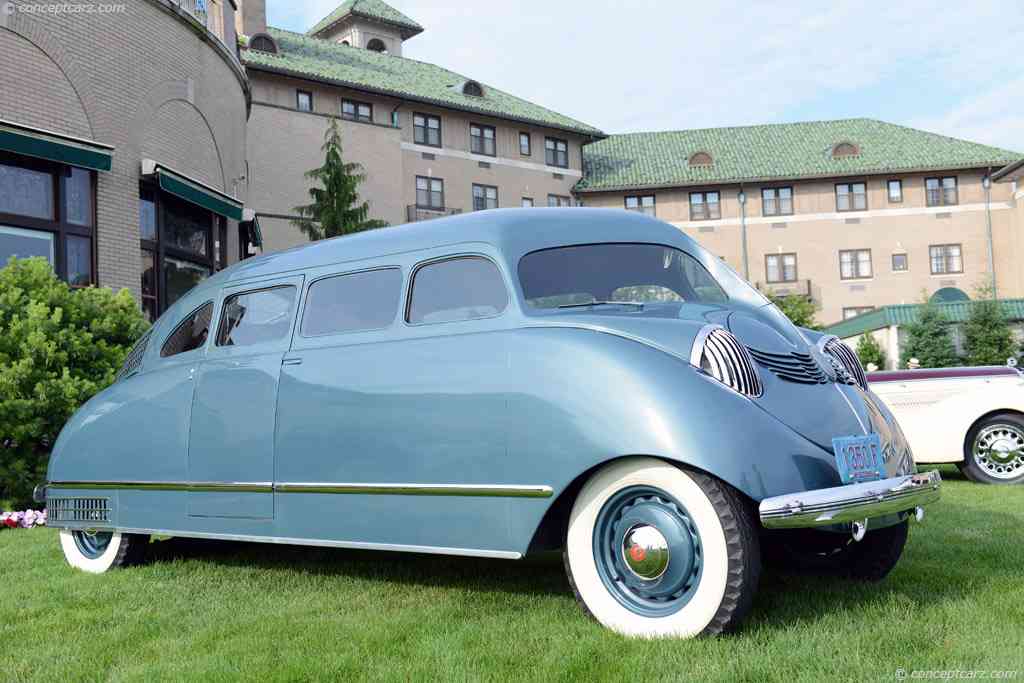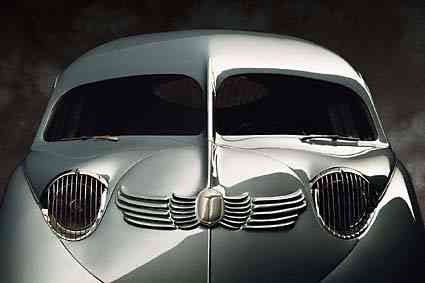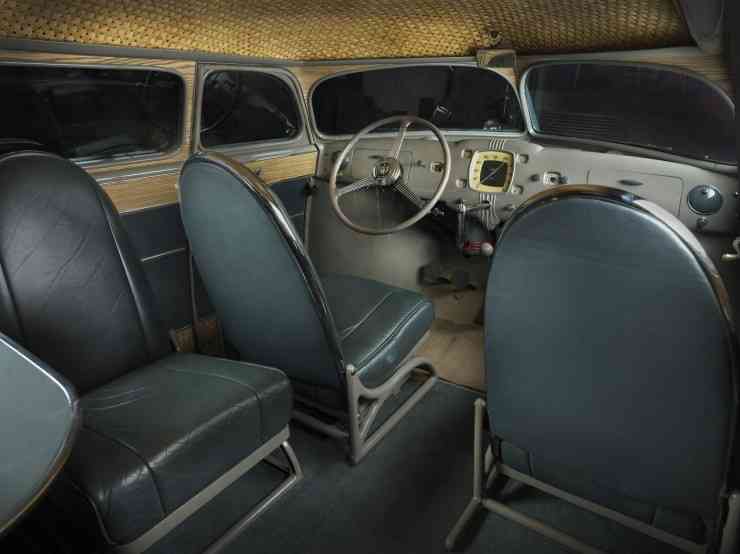Cars the of 30s: The simply unique 1936 STOUT SCARAB
The futuristic Art Deco movement which emerged in the 1920s inspired bold creations such as New York’s Chrysler Building, streamlined trains and ocean liners, sleek radios, chrome-lined furniture, sculpture and clothes. It was bold, geometric and exuded speed and movement. It evolved into the even more radical Streamline Moderne movement of the 1930s.

This remarkable and rare American car, with its smooth, curved surfaces, is a beautiful example of the deco desire to break with the past and create objects brought back from a marvellous technological future. The Scarab is also credited as the World’s first production ‘minivan’.
William Bushnell Stout was a journalist and car and aviation engineer. He met the famous ‘futurist’, author, architect and designer Buckminster Fuller at a New York Automobile Show and wrote a feature on Fuller’s Dymaxion, an experimental, ‘ground-taxiing’ teardrop car that one day might fly.
Only three Dymaxions were built, but Stout was inspired to conceive the equally novel Scarab, completely different from other cars of the day. He saw it as a combined, long-wheelbase car/office on wheels.

It had a lightweight fuselage body of unitary construction styled by John Tjaarda and, apart from the central driver’s fixed seat, had movable seats (some able to swivel to the rear) plus an optional table. The body combined elements of aircraft and rail observation car. Under the flat door was a rear-mounted, 3.6-litre Ford V8 driving the rear wheels through a three-speed transaxle.
In an era of live axles and leaf springs, the Scarab offered independent suspension all round with coil springs and oil shock absorbers’. The Scarab’s rear swing-axle suspension with long coil-spring struts (like aircraft landing gear) is said to have inspired the Chapman Strut used decades later by Lotus.
The rear-engined Scarab gave a smooth, quiet ride and light steering, but its aerodynamics and rear-weight bias ensured interesting handling.
Custom-built, a Scarab was very expensive and, at $5,000, only nine were constructed at Dearborn. This Scarab was originally owned by a Parisian publisher and there is a legend that this car was the scene of a meeting during World War II in Morocco between General Eisenhower and Charles de Gaulle.

In the 1950s it was sold to a circus owner who apparently kept monkey cages inside it and it then went to French industrial designer Phillipe Charbonneux, who had a car museum in Reims.
The current owner acquired the car from charbonneaux in 1996 and had it fully restored at his Michigan company, Autometric Collision, in 2001. This streamlined sedan, minivan, people-carrier, office and 30’s vision of speedy, optimistic future, has since been displayed in numerous car museums.
Please follow us on Facebook, Instagram, YouTube and Twitter. We are constantly posting a variety of videos, pictures and competitions.




